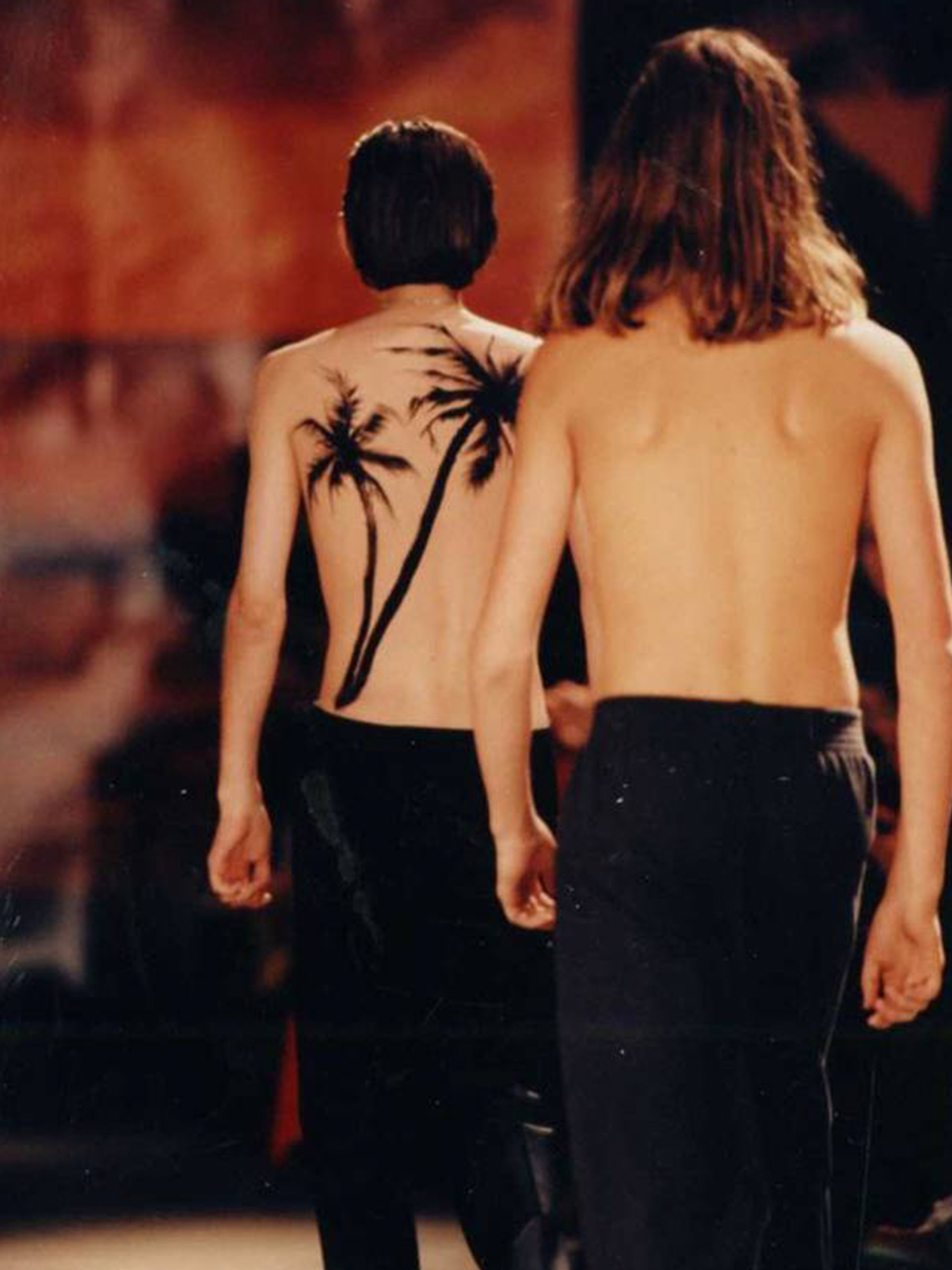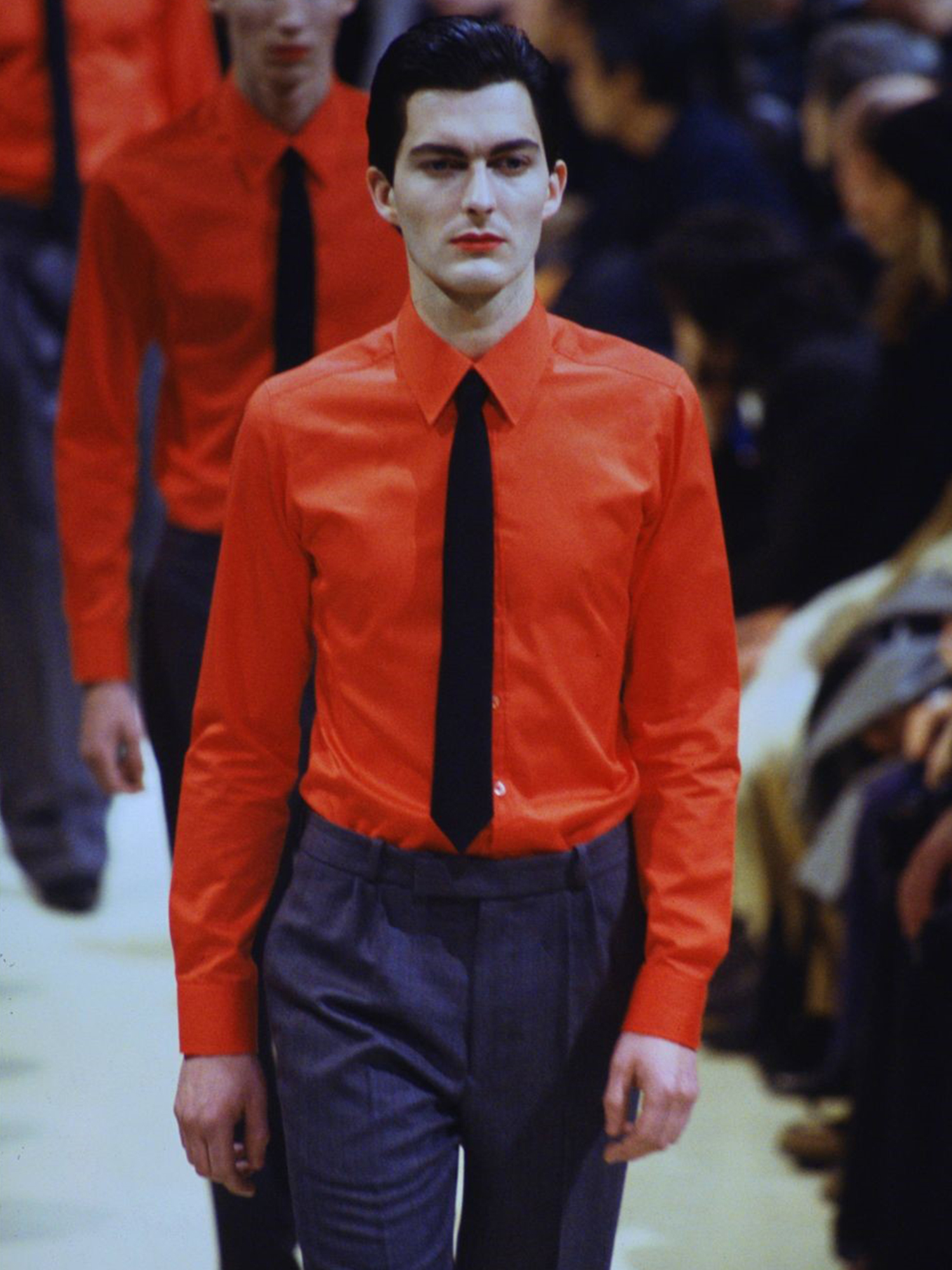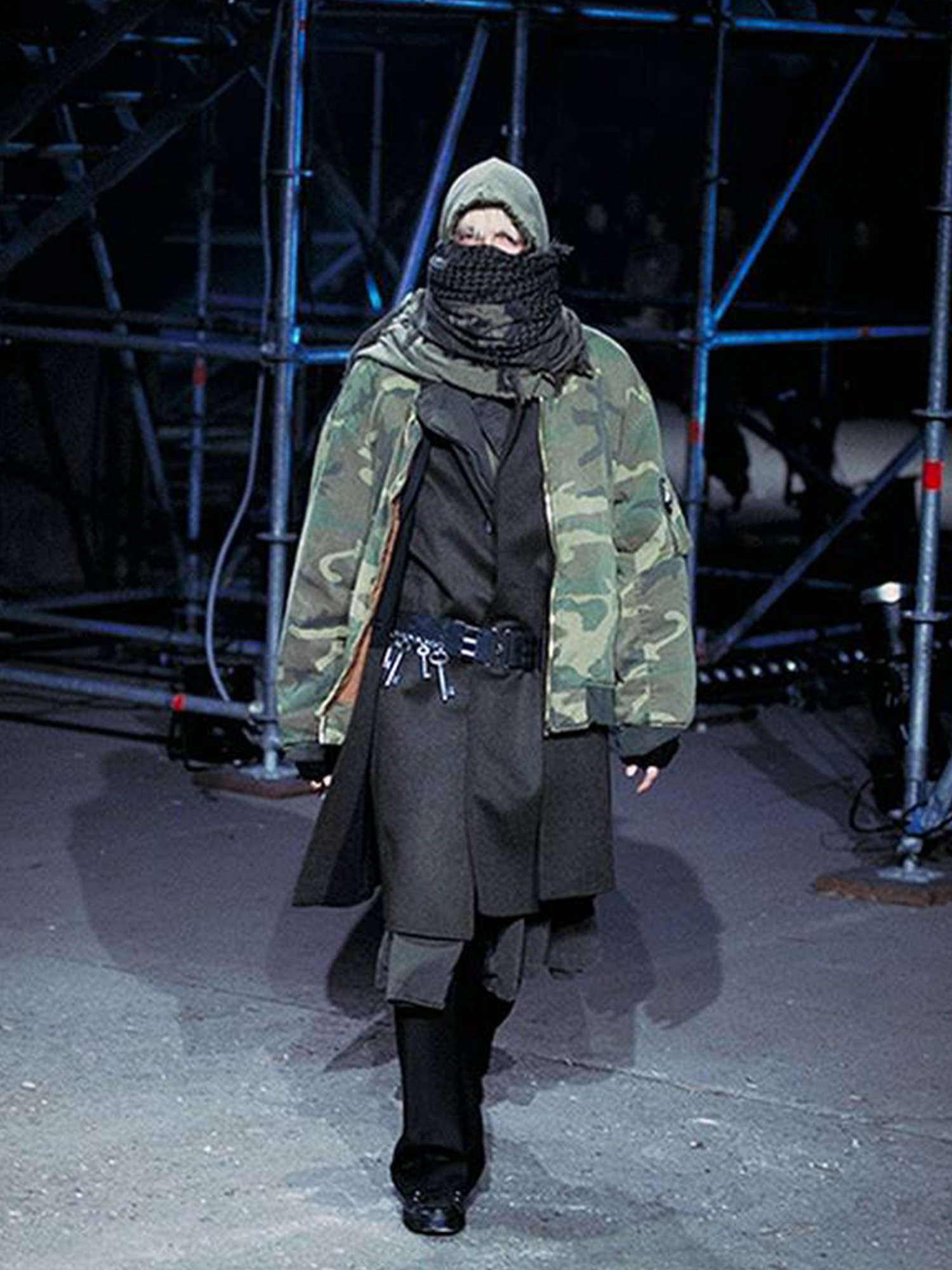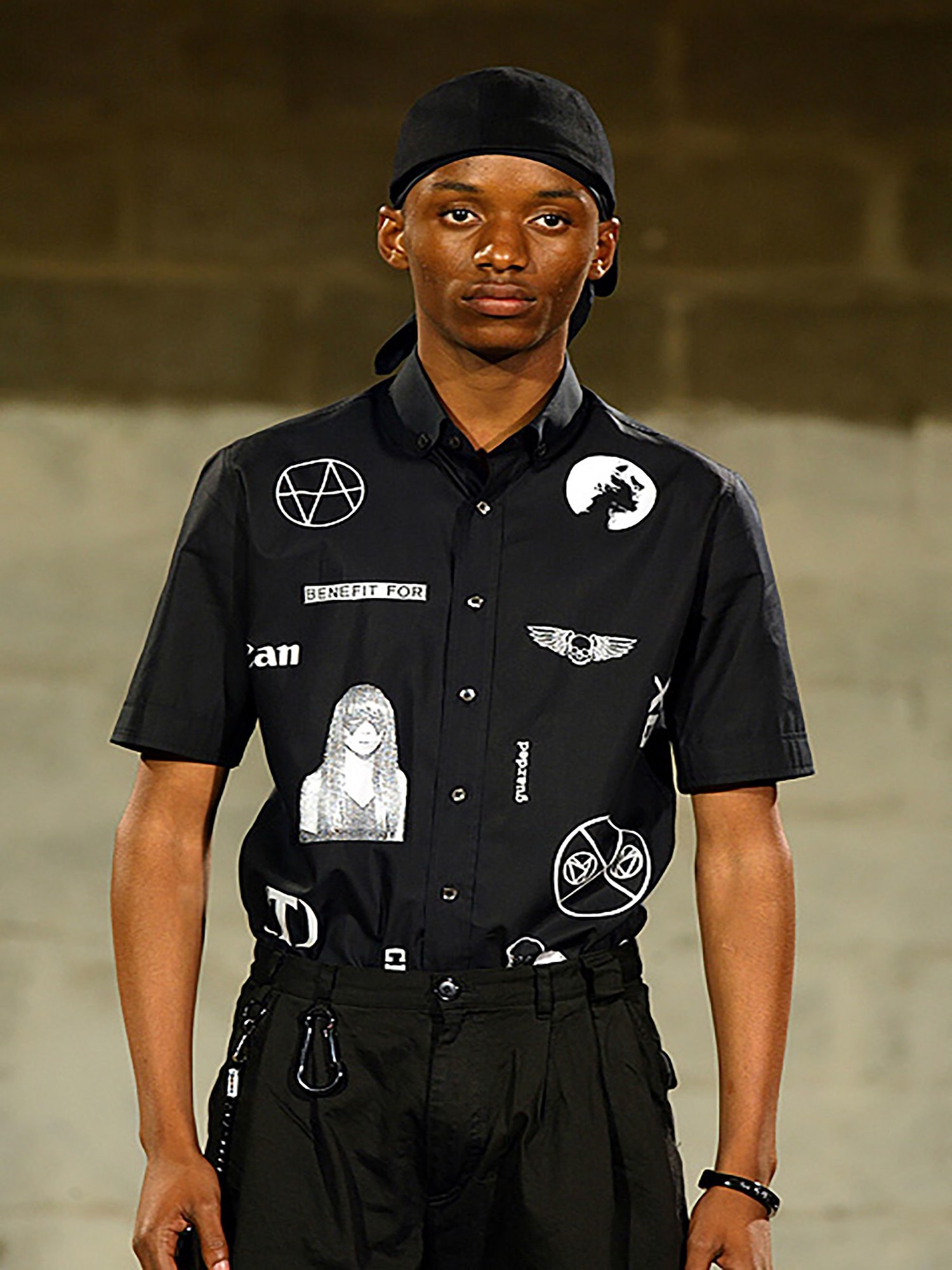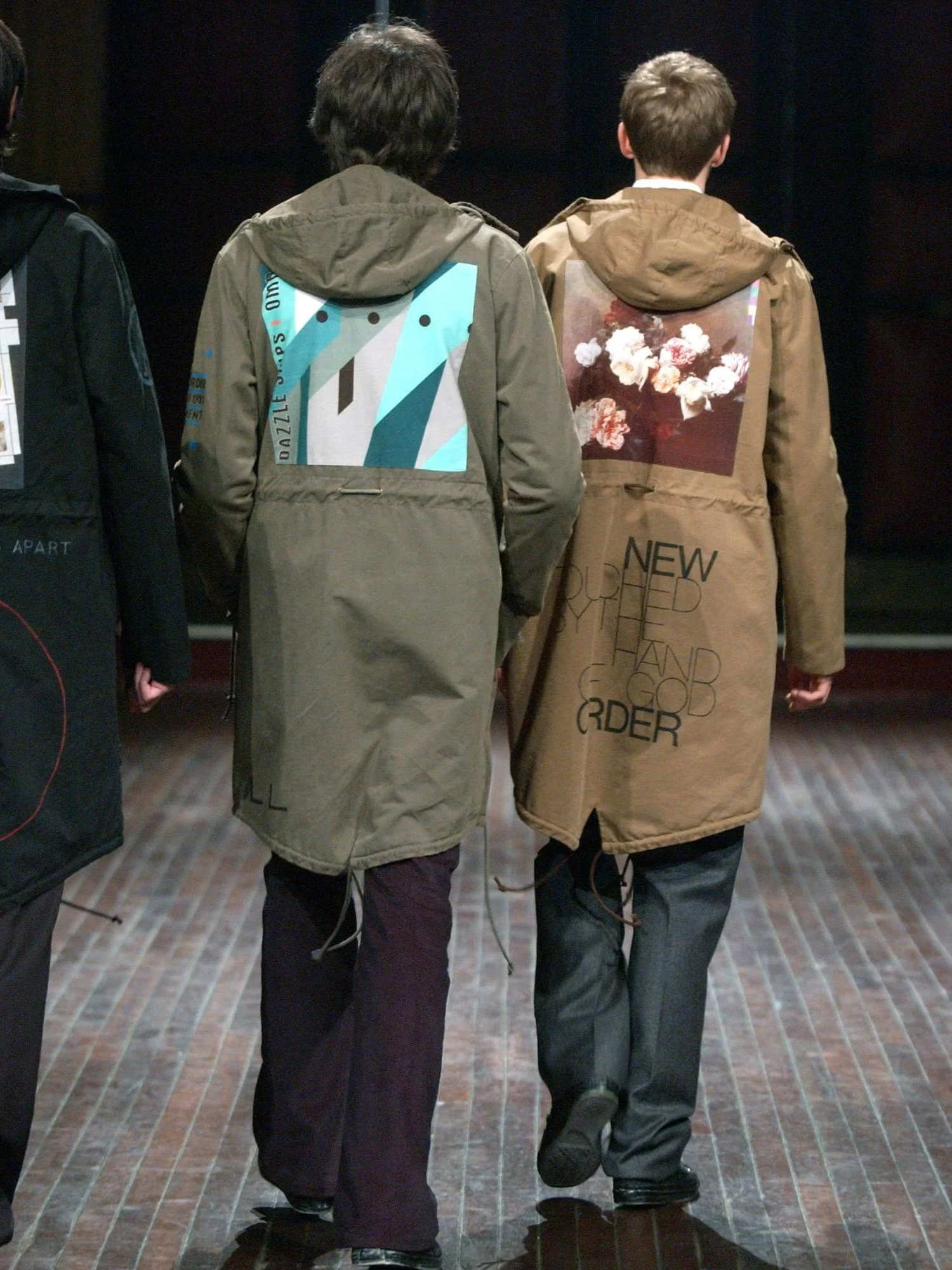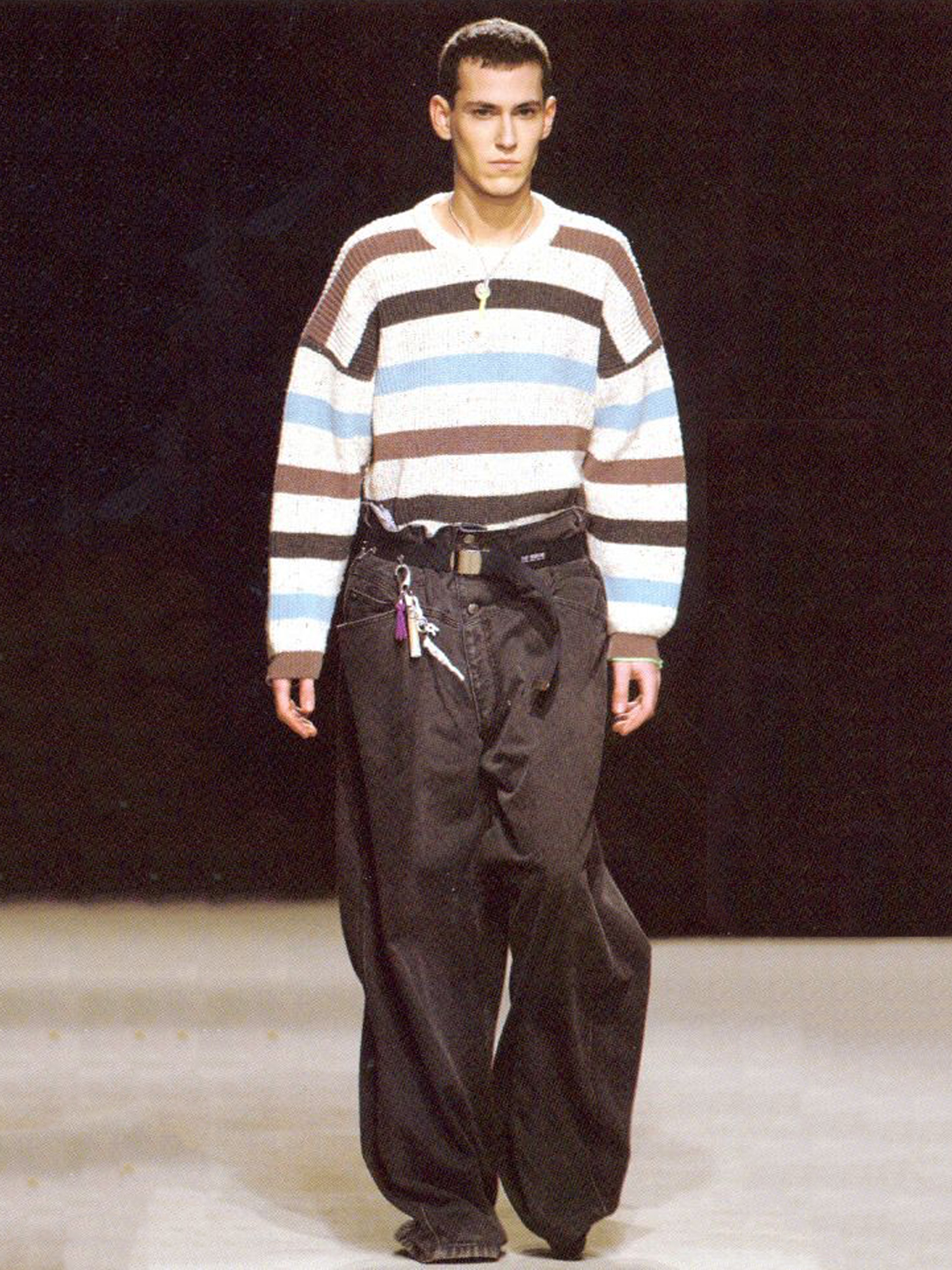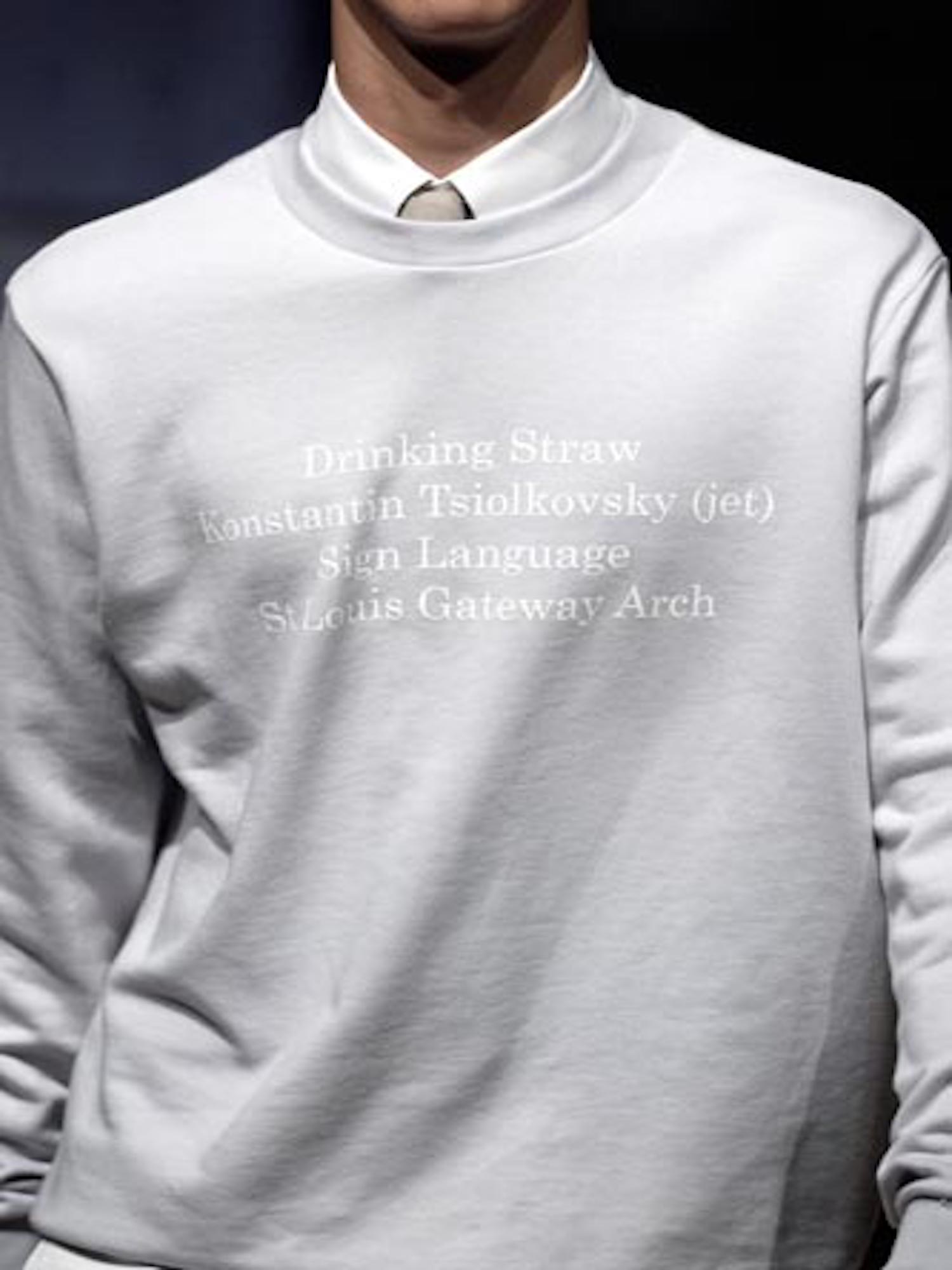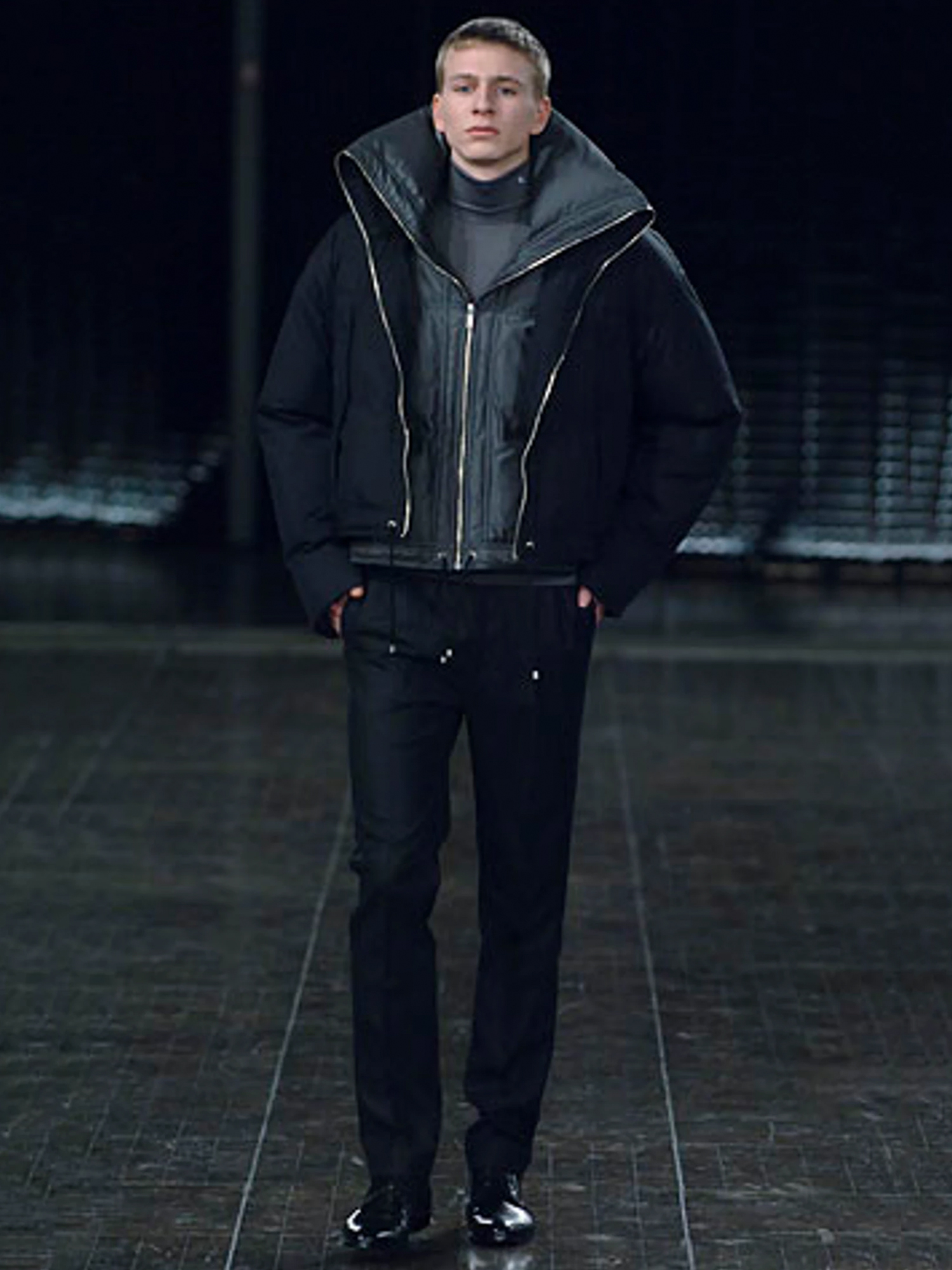RAF SIMONS
Born in a small town in the mid 90s Belgium, Raf Simons was brought forth into a time of antagonism, while the country was in socio-political foment. His mother was a house cleaner, and his father was a night watchman. America’s post-war youth culture had yet to reach inner Europe; hence, in the absence of cultural happenings, Simons spent most of his days at a music shop, immersing himself in Kraftwerk’s works Sonic Youth, Joy Division, and Black Flag. A non-conformist by nature, he often sewed patches of his favorite bands onto his clothes, much to the dismay of his teachers. His father, Jack Simons, lived a life of regimentation, upholding a standard expected of uniform men. Simons’ clothes are a rejection of such, free of any restrictions - silhouettes big or small - depending on the emotions and attitude that they are intended to invoke in the wearer.
Unlike most designers, Simons did not graduate with a fashion degree. Instead, he studied Industrial and Furniture Design at the LUCA School of Arts. It was during the fourth year that he sought an internship with one of the Antwerp Six, Walter Van Beirendonck. Simons did not do fashion work under his wing, instead of being tasked to design presentations, masks, and even perfume bottles for the designer. Walter Van Beirendock brought Simons to Paris, where they attended fashion presentations by Ann Demeulemeester, Dries Van Noten, and Dirk van Saene. It was then that Simons saw Maison Martin Margiela’s Spring-Summer 1990 collection, a show that revolutionized the industry and kickstarted Simons’ fashion journey. Linda Loppa, then director of Antwerp’s Royal Academy of Fine Arts, was the first person that Simons presented a collection to, of which she remarked, “I knew you wouldn’t need school.”, a stark acknowledgment of his abilities.
Adolescence, subcultural identities, and dissent, Simons’ eponymous label was a coalescence of teenage memories, his obsessions, and beliefs he resonated with. Post-punk culture and underground techno scenes heavily influenced his clothing, as seen by visual references from Joy Division and Manic Street Preachers. Silhouettes for his Spring/Summer 2000 collection titled “Summa Cum Laude”, see style cues borrowed from MENSA students blended with the dress code of Gabber ravers. Prints from Spring/Summer 2002 included texts like “Kollaps”, “We are ready and willing to ignite just born too late” and “Stand! Evasion”, this together with its predecessor collection “Riot Riot Riot”, displayed youth unrest, a discontented generation, meant to reflect their desire for change. Without a doubt, these early collections produced some of the most sought-after and influential pieces from the designer.
In his later years, Raf Simons would move on to design collections inspired by artists like Brian Calvin and Sterling Ruby, basing the entire collection around their works. The designer has since been invited to helm the creative direction of other fashion houses such as Jil Sander, Christian Dior, and Calvin Klein. He also curated several art exhibitions and even held a teaching position at Vienna’s University of Applied Arts. The impact Simons left is not bound to just fashion. Its reach is multi-disciplinary, spanning across into music, art, even photography. Over the years, Raf Simons stayed true to his roots, perfectly portraying the revolutionary spark of adolescence, that awkward menace of youth itself.
“When it’s only clothes, that is not satisfying enough for me. I don’t think I could do this for ten, twenty years if that was all. It also has to be about a psychology or a mentality or a concept.”
Written by Zhong Ke
「View our Raf Simons Collection」


